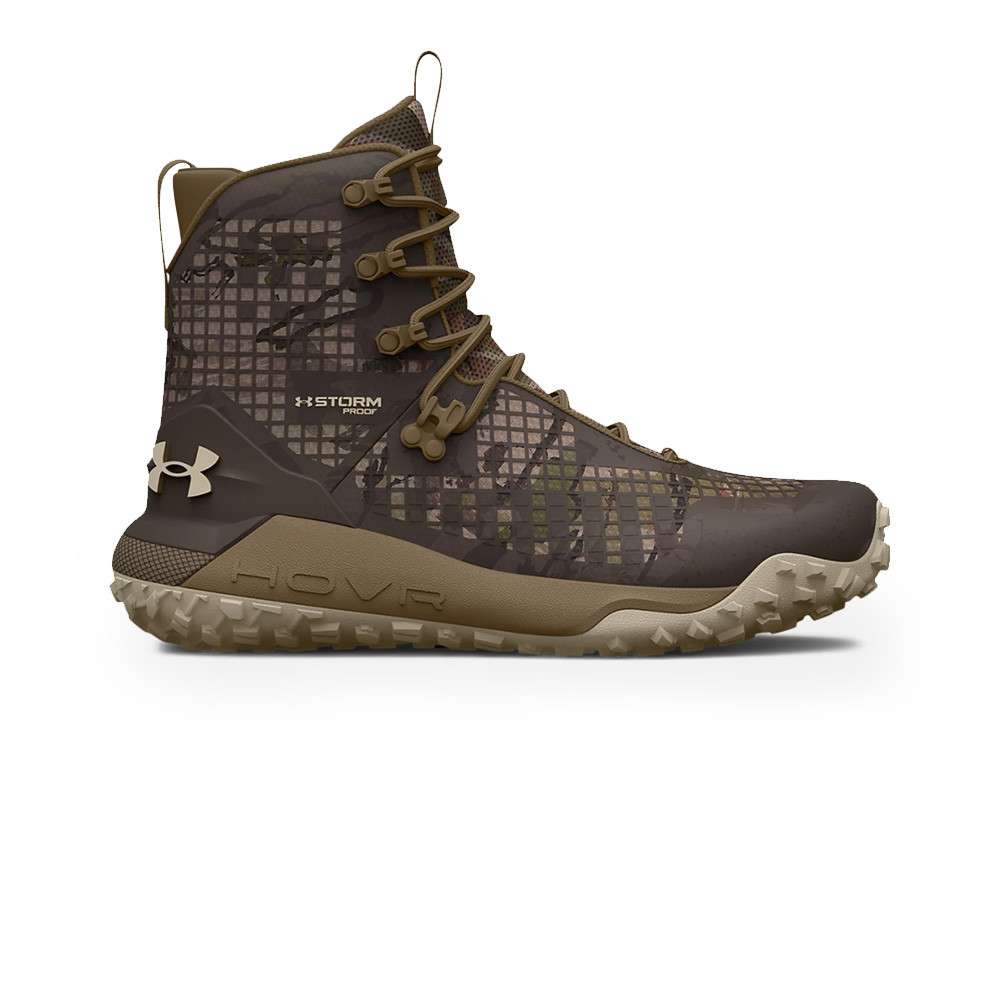The world of outdoor adventure demands gear that’s not just durable, but also innovative and comfortable․ Underarmour, a brand synonymous with athletic performance, has stepped into the hiking arena with a line of boots designed to redefine expectations․ Underarmour hiking boots strive to blend the agility and responsiveness of athletic footwear with the ruggedness required to conquer challenging terrains․ This fusion aims to provide hikers with a superior experience, enhancing both speed and stability on the trails, making your next adventure a memory to cherish․
The Underarmour Advantage: Technology and Comfort
Underarmour’s commitment to technological innovation is evident in their hiking boot designs․ They often incorporate features like:
- UA HOVR™ Cushioning: This proprietary foam technology provides exceptional energy return, reducing fatigue on long hikes․ Imagine feeling lighter and more energetic even after miles of trekking․
- Michelin® Outsoles: Partnering with Michelin, Underarmour equips their boots with high-performance outsoles that deliver superior grip and traction on various surfaces․ Say goodbye to slipping and sliding on loose rocks․
- Waterproof Breathable Membranes: Keeping your feet dry is essential for comfort and preventing blisters․ Underarmour utilizes waterproof membranes that allow moisture to escape while keeping water out․
Choosing the Right Underarmour Hiking Boot for You
Underarmour offers a range of hiking boots to suit different needs and preferences․ Consider these factors when making your selection:
Terrain and Hiking Style
- Light Hiking Boots: Ideal for day hikes on well-maintained trails․ These boots prioritize flexibility and comfort․
- Mid-Cut Hiking Boots: Provide ankle support for moderate terrain and backpacking trips․ A good balance of stability and agility․
- Full-Cut Hiking Boots: Designed for rugged terrain and heavy loads․ Offer maximum ankle support and protection․
Fit and Comfort
Proper fit is crucial for preventing blisters and ensuring a comfortable hiking experience․ Be sure to try on boots with hiking socks and walk around to assess the fit․ Consider factors like:
- Toe Box: Ensure ample room for your toes to wiggle without feeling cramped․
- Heel Cup: The heel should fit snugly to prevent slippage․
- Arch Support: Choose a boot with adequate arch support for your foot type․
Underarmour Hiking Boots: A Comparative Look
| Feature | Light Hiking Boot | Mid-Cut Hiking Boot | Full-Cut Hiking Boot |
|---|---|---|---|
| Terrain | Well-maintained trails | Moderate terrain | Rugged terrain |
| Ankle Support | Low | Medium | High |
| Weight | Lightest | Medium | Heaviest |
| Load Capacity | Light loads | Moderate loads | Heavy loads |
Maintaining Your Underarmour Hiking Boots
Once you’ve invested in a pair of Underarmour hiking boots, proper maintenance is key to extending their lifespan and ensuring continued performance․ Neglecting care can lead to premature wear and tear, impacting both comfort and safety․ Here are some essential tips:
- Cleaning: After each hike, remove any dirt, mud, or debris with a soft brush and clean water․ Avoid harsh soaps or detergents, as they can damage the materials․ For tougher stains, use a cleaner specifically designed for hiking boots․
- Drying: Never dry your boots near direct heat sources like radiators or fireplaces, as this can cause the leather or synthetic materials to crack․ Instead, allow them to air dry in a cool, well-ventilated area․ Stuffing them with newspaper can help absorb moisture and maintain their shape․
- Waterproofing: Regularly apply a waterproofing treatment to maintain the water-repellent properties of your boots․ Follow the manufacturer’s instructions for application and reapply as needed, especially after heavy use or cleaning․
- Storage: Store your boots in a cool, dry place away from direct sunlight․ Consider using a boot bag or box to protect them from dust and damage․
Troubleshooting Common Issues
Even with proper care, you may encounter some common issues with your hiking boots․ Here are some tips for addressing them:
- Blisters: Blisters are often caused by friction between your foot and the boot․ Ensure a proper fit, wear moisture-wicking socks, and consider using blister patches or tape on areas prone to rubbing․
- Sore Feet: Sore feet can be caused by inadequate cushioning or support․ Consider adding aftermarket insoles for enhanced comfort and shock absorption․
- Water Leakage: If your boots are leaking, ensure that the waterproof membrane is not damaged․ Reapply a waterproofing treatment and check for any tears or holes․
- Odor: Foot odor can be a common issue, especially after long hikes․ Use a foot powder or odor eliminator spray to keep your boots fresh․ Regularly remove and wash the insoles․
Knowing When to Replace Your Boots
Even with diligent care, hiking boots eventually wear out and need to be replaced․ Here are some signs that it’s time for a new pair:
- Worn Outsoles: If the outsole is significantly worn down, it will lose its grip and traction, increasing the risk of slips and falls․
- Damaged Midsole: A compressed or cracked midsole will provide less cushioning and support, leading to foot fatigue and potential injuries․
- Torn Uppers: Tears or holes in the uppers can compromise the boot’s waterproofness and structural integrity․
- Loss of Support: If the boots no longer provide adequate ankle support or stability, it’s time to replace them․
Remember that your hiking boots are an essential piece of gear that can significantly impact your safety and enjoyment on the trails․ By following these advisory tips for maintenance, troubleshooting, and replacement, you can ensure that your Underarmour hiking boots continue to perform at their best for many adventures to come․ So, lace up, hit the trails, and explore the world with confidence!
Enhancing Your Hiking Experience with Underarmour
Beyond selecting and maintaining your Underarmour hiking boots, there are several other steps you can take to enhance your overall hiking experience․ Consider these additional tips for a safer and more enjoyable adventure:
- Break In Your Boots: Don’t hit the trail with a brand-new pair of boots! Spend some time wearing them around the house or on short walks to break them in and prevent blisters․
- Choose the Right Socks: Invest in high-quality hiking socks made from moisture-wicking materials like merino wool or synthetic blends․ Avoid cotton socks, as they tend to retain moisture and can lead to blisters․
- Use Gaiters: Gaiters are waterproof coverings that extend from your boots to your lower legs, preventing debris, snow, and water from entering your boots․
- Pack Light: Avoid carrying unnecessary weight, as it can increase fatigue and strain on your feet and joints․ Pack only essential items and choose lightweight gear whenever possible․
- Learn Basic First Aid: Be prepared to handle minor injuries and ailments on the trail․ Carry a basic first-aid kit and familiarize yourself with common hiking-related issues like blisters, cuts, sprains, and insect bites․
- Stay Hydrated: Drink plenty of water throughout your hike to prevent dehydration․ Carry a water bottle or hydration reservoir and sip frequently․
- Plan Your Route: Before heading out, research your route and be aware of the terrain, elevation gain, and potential hazards․ Let someone know your plans and expected return time․
- Be Aware of the Weather: Check the weather forecast before your hike and be prepared for changing conditions․ Pack appropriate clothing and gear for rain, wind, and cold temperatures․
Advanced Hiking Techniques for Underarmour Enthusiasts
For more experienced hikers looking to push their limits and explore more challenging terrain, consider these advanced techniques:
- Navigation Skills: Learn how to use a map and compass or a GPS device to navigate in the wilderness․
- Off-Trail Hiking: If you venture off-trail, be prepared for uneven terrain, dense vegetation, and potential hazards․ Use caution and avoid disturbing the natural environment․
- Rock Climbing: If your hike involves rock scrambling or climbing, be sure to have the necessary skills and equipment․ Consider taking a rock climbing course or hiring a guide․
- Snowshoeing or Ice Hiking: In snowy or icy conditions, use snowshoes or ice cleats to improve traction and prevent falls․
Environmental Responsibility: Leave No Trace
As hikers, we have a responsibility to protect the natural environment for future generations․ Follow the Leave No Trace principles to minimize your impact on the trails:
- Plan Ahead and Prepare: Research your route and be aware of any regulations or restrictions․
- Travel and Camp on Durable Surfaces: Stay on established trails and campsites to avoid damaging vegetation․
- Dispose of Waste Properly: Pack out all trash, including food scraps and wrappers․
- Leave What You Find: Avoid taking souvenirs or disturbing natural objects․
- Minimize Campfire Impacts: Use a camp stove for cooking whenever possible․ If you must have a campfire, use an established fire ring and keep it small․
- Respect Wildlife: Observe wildlife from a distance and avoid feeding them․
- Be Considerate of Other Visitors: Be courteous to other hikers and respect their experience․
By following these advisory tips, you can maximize the performance and longevity of your Underarmour hiking boots and, most importantly, ensure a safe, enjoyable, and responsible hiking experience․ So get out there, explore the great outdoors, and create lasting memories with your Underarmour gear! Let’s make every hike with our underarmour hiking boots a positive one, for ourselves and for the environment․





